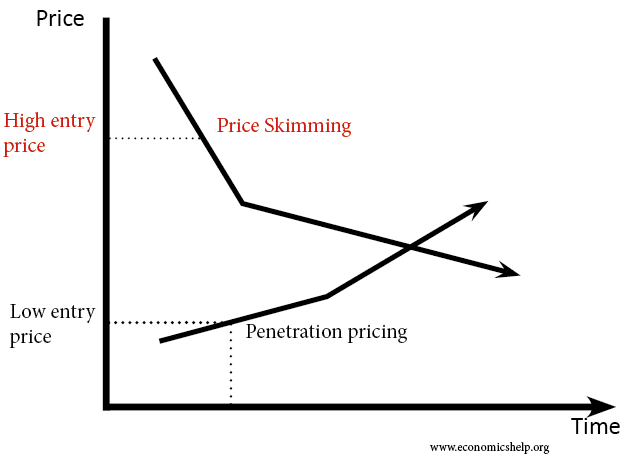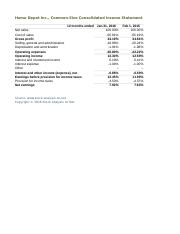About the author : turm

A company that embarks on expansions or acquisitions that create shareholder value should achieve an ROA that exceeds the costs of capital. Moreover, it’s important that investors ask how a company’s ROA compares to those of its competitors and to the industry average. For example, investors can compare ROA to the interest rates companies pay on their debts. If a company is squeezing out less from its investments than what it’s paying to finance those investments, that’s not a positive sign. By contrast, an ROA that is better than the cost of debt means that the company is pocketing the difference. A high value of the ROA ratio is a strong indication a company is functioning well, making significant returns from assets.
Buy AXIS Bank; target of Rs 1260: Emkay Global Financial – Moneycontrol
Buy AXIS Bank; target of Rs 1260: Emkay Global Financial.
Posted: Sat, 29 Jul 2023 07:00:00 GMT [source]
In the absence of debt, shareholder equity and the company’s total assets will be equal. ROE is one of the most important financial ratios for the stock investor hunting good value companies. It’s a straightforward and handy indication of how well a firm is able to generate revenue from the money invested in it. High and stable ROE is generally better, but the absolute number should be considered in the context of the industry. Uncovering value stocks requires careful analysis of a company’s fundamentals, but some metrics help you separate the wheat from the chaff quickly.
What does ROA mean?
A decline in demand can leave an organization high and dry and over-invested in assets it cannot sell to pay its bills. A company that has higher returns on equity could able to generate more cash internally. So it is always preferable to invest in companies with higher and consistent returns on equity. It is not always advisable to invest in high ROE companies to make better returns.
For these reasons, it’s best to use ROA as a way to analyze a single business over time. Plotting out the ROA of a company quarter over quarter or year over year can help you understand how well it’s performing. Rising or falling ROA can help you understand longer-term changes in the business. You should be very cautious about comparing ROAs across different companies, however. ROA is not a useful tool for comparing different sized companies or companies that aren’t in similar industries. Expected ROAs might vary even among companies of the same size in the same industry, but are at different stages in their corporate lifecycles.
© Copyright Management Notes 2023 All rights reserved.
ROE is the percentage expression of a company’s net income, as it is returned as value to shareholders. This formula allows investors and analysts an alternative measure of the company’s profitability and calculates the efficiency with which a company generates profit, using the funds that shareholders have invested. However, shareholders’ equity is a book value measure of equity, as opposed to the equity value (i.e. market capitalization). Since shareholders’ equity is equal to a company’s total assets less its total liabilities, ROE is often called the “return on net assets”. Return on equity is a ratio of a public company’s net profits to its shareholders’ equity, or the value of the company’s assets minus its liabilities. This is known as shareholders’ equity because it is the amount that would be divided up among those who held its stock if a company closed.
A common method is to take net income from the income statement and divide it by the total of shareholder equity on the balance sheet. Since equity is equal to assets minus liabilities, increasing liabilities (e.g., taking on more debt financing) is one way to artificially boost ROE without necessarily increasing profitability. This can be amplified if that debt is used to engage in share buybacks, effectively reducing the amount of equity available. Though ROE looks at how much profit a company can generate relative to shareholders’ equity, return on invested capital (ROIC) takes that calculation a couple of steps further. Expressed as a percentage, ROA identifies the rate of return needed to determine whether investing in a company makes sense.

Measured against common hurdle rates like the interest rate on debt and cost of capital, ROA tells investors whether the company’s performance stacks up. The three-part DuPont analysis to calculate ROE is profit margin multiplied by asset turnover multiplied by the equity multiplier. The first part of the formula (profit margin times asset turnover) can be simplified to just ROA. The way that a company’s debt is taken into account is the main difference between ROE and ROA.
Negative Net Income
There are certain benchmarks on which a company compares the returns on equity with its industry average. Together, however, they provide a clearer representation of a company’s performance. roe vs roa The ROA is similar to the ROCE ratio in that it measures profitability and financial efficiency. The difference is that the ROA ratio focuses specifically on the efficient use of assets.
ROCE vs. ROA: What’s the Difference? – Investopedia
ROCE vs. ROA: What’s the Difference?.
Posted: Sat, 25 Mar 2017 19:12:41 GMT [source]
The metric also provides a good line of sight into net margins and asset turnover, two key performance drivers. ROA makes the job of fundamental analysis easier, helping investors recognize good stock opportunities and minimizing the likelihood of unpleasant surprises. The simplest way to determine ROA is to take net income reported for a period and divide that by total assets. To get total assets, calculate the average of the beginning and ending asset values for the same time period. The differences between the ROCE and ROA ratios are not many, but they are significant. Capital employed is defined as total assets minus current liabilities or total shareholders‘ equity plus debt liabilities.
Key Differences
Managers, analysts and investors use ROA to evaluate a company’s financial health. But if that company takes on financial leverage, its ROE would be higher than its ROA. By taking on debt, a company increases its assets thanks to the cash that comes in. Assuming returns are constant, assets are now higher than equity and the denominator of the return on assets calculation is higher because assets are higher. The difference between return on equity (ROE) and return on assets (ROA) is tied to the capital structure, i.e. the mixture of debt and equity financing used to fund operations. There are a number of different figures from the income statement and balance sheet that a person could use to get a slightly different ROE.
- Together, however, they provide a clearer representation of a company’s performance.
- ROA’s measure of a company’s efficiency in terms of assets complements the conclusions you can draw from ROE.
- ROE is arguably the most widely used profitability metric, but many investors quickly recognize that it doesn’t tell you if a company has excessive debt or is using debt to drive returns.
- Return on capital, in addition to using the value of ownership interests in a company, also includes the total value of debts owed by the company in the form of loans and bonds.
- The money the company earns from selling widgets minus the cost of materials and labor equals its net profit.
Specifically, service-based companies have a low investment in assets which leads to higher ROA. Capital intensive companies are required to invest a large proportion of profit to maintain existing property and equipment which results in low ROA. Alternatively, when taking on debt, a company’s returns and equity both remain unchanged.
ROCE vs. ROA: What’s the Difference?
The higher the ROCE, the more efficiently a company makes use of its available capital to generate profits. The ROCE ratio is especially useful for comparing similar capital-intensive companies. A good ROCE ratio for a company should always be higher than its average financing interest rate. Each one tells you something a bit different, but in our view, ROIC is the most useful all-around metric because it reflects all the investors in the company – not just the equity investors (common shareholders). This provides a better indication of financial performance for companies with significant debt. So, it is best to view ROE value in relation to other financial efficiency measures.

The two companies have virtually identical financials, with the following shared operating values as listed below. Company A has an ROE of 40% ($240m ÷ $600m) but Company B has an ROE of 30% ($240m ÷ $800m), with the lower ROE % being due to the 2nd company carrying less debt on its B/S. „Two firms can have the same ROE and get there in completely different ways,“ says Johnson. This also helps clarify the different strategic paths companies may pursue—whether to become a low-margin, high-volume producer or a high-margin, low-volume competitor.
Return on Assets is the amount of profit a company earns in relation to its total resources or total assets. Return on assets (ROA) shows how efficiently a company uses its assets in order to generate revenue. Each of these metrics is used to evaluate and compare companies based on how efficiently their management uses their financial resources to generate profit, but each takes a different angle. A negative ROE due to the company having a net loss or negative shareholders’ equity cannot be used to analyze the company, nor can it be used to compare against companies with a positive ROE. The term ROE is a misnomer in this situation as there is no return; the more appropriate classification is to consider what the loss is on equity. Finally, negative net income and negative shareholders‘ equity can create an artificially high ROE.
Identifying sources like these leads to a better knowledge of the company and how it should be valued. Both the three- and five-step equations provide a deeper understanding of a company’s ROE by examining what is changing in a company rather than looking at one simple ratio. As always with financial statement ratios, they should be examined against the company’s history and its competitors‘ histories.
The more debt a company has raised, the less equity it has in proportion, which causes the ROE ratio to increase. Return on capital, in addition to using the value of ownership interests in a company, also includes the total value of debts owed by the company in the form of loans and bonds. While it’s one of the most important financial indicators to stock investors, ROE doesn’t always tell the whole story. That means that its annual net income is about 22.7% of its shareholders‘ equity. That’s why to gain a 360-degree view of a company’s efficiency, ROE must be viewed in conjunction with other factors, like ROA and ROI. ROE varies across sectors, especially as companies have different operating margins and financing structures.
- There are several iterations of the DuPont formula, the two-, three- and five-part.
- This article gives a basic understanding and comprehensive examples of ROA and ROE.
- In our modeling exercise, we’ll be calculating the return on equity (ROE) for two different companies, Company A and Company B.
- ROE can also be used to help estimate a company’s growth rates — the rate at which a company can grow without having to borrow additional money.
- „Two firms can have the same ROE and get there in completely different ways,“ says Johnson.
Financial institutions always try to pursue those businesses capable of yielding the highest possible return, based on the capital invested and the risk assumed. However, the more r’s they have, the more complicated things get (RORWA, RAROC, RORAC, RARORAC). Let’s go over each one of them to understand their meaning and apply the most appropriate one in each case. Due to the inclusion of liabilities, ROA is a valuable internal management ratio to evaluate the benefits of investing in a new system versus expanding the current operations.


Neueste Kommentare